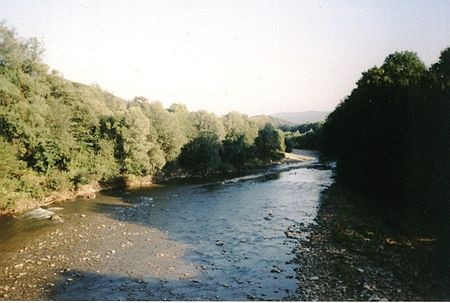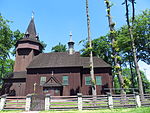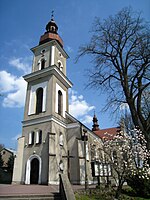Skawa

The Skawa (German: Schaue) is a river in southern Poland, a right tributary of the Vistula. Originating in the Western Carpathians (Beskids), the Skawa is 96 kilometres (60 mi) long and drains 1,160 square kilometres (450 sq mi). The several towns it passes along its path include Jordanów, Maków Podhalański, Sucha Beskidzka, Wadowice and Zator. The whole river is located within the territory of Lesser Poland Voivodeship. Skawa has its source in the Spytkowice Pass, at the height of 700 metres (2,300 ft) above sea level. Since it is a mountain river and causes frequent floodings, its regulation has been a priority for years. Construction of a dam at a village of Świnna Poręba is to be completed by 2014. A reservoir will be created, which will prevent future floods, and which will serve as a source of drinking water for the local population. Skawa flows into the Vistula near the village of Smolice.
Excerpt from the Wikipedia article Skawa (License: CC BY-SA 3.0, Authors, Images).Skawa
gmina Babice
Geographical coordinates (GPS) Address Nearby Places Show on map
Geographical coordinates (GPS)
| Latitude | Longitude |
|---|---|
| N 50.031111111111 ° | E 19.453333333333 ° |
Address
32-551 gmina Babice
Lesser Poland Voivodeship, Poland
Open on Google Maps




